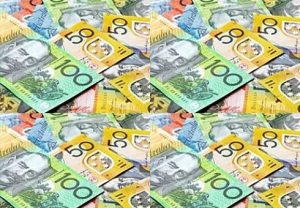Australian Dollar hits new high
15 September 2016 by News DeskAustralian Dollar was impacted by falling price of iron ore, Australia’s most lucrative commodity.
 Australian Dollar was not the only currency to be affected by commodity prices, many of which have struggled this week due to market focus on the US economy and concerns that the Fed will take a more unpredictable approach to interest rates, according to currency specialists TorFX
Australian Dollar was not the only currency to be affected by commodity prices, many of which have struggled this week due to market focus on the US economy and concerns that the Fed will take a more unpredictable approach to interest rates, according to currency specialists TorFX
The Australian Dollar was also weakened on Thursday by a disappointing domestic employment report.
After July’s surprisingly good employment data, markets had hoped for more decent employment news from Australia.
However, August saw a poor employment change of -3.9k despite 15k being predicted and while the unemployment rate fell to 5.6%, this was because participation dipped from 64.9% to 64.7%.
New Zealand Dollar (NZD) – Demand for the New Zealand Dollar remained solid despite the market’s aversion to risk-correlated currencies thanks to more optimistic data from New Zealand. According to New Zealand’s Q2 Gross Domestic Product (GDP) report, the nation grew by 0.9% in the second quarter and set the year-on-year score at 3.6% as expected. While the quarterly score of 0.9% was below expectations of 1.1%, it was still an improvement over Q1’s score of 0.7%.
Despite this, the aforementioned low demand for risk-correlated investments left the ‘Kiwi’ relatively weak. As a result, Sterling has been able to hold near its best weekly levels vs NZD, despite slipping slightly on Thursday morning.
Australian Dollar hits new high
Pound Sterling (GBP) – Sterling saw thoroughly mixed movement on Wednesday, briefly plummeting during the afternoon before recovering later in the day as investors readjusted their positions on the currency ahead of today’s Bank of England (BoE) meeting.
This week’s mixed data, including Tuesday’s disappointing inflation report and Wednesday’s mixed job report, have left investors uncertain as to what tone the BoE will take in its meeting. According to Wednesday’s job report, real wage growth slowed in August, which was concerning to some analysts.
Thursday will see the BoE’s first meeting since an aggressive package of stimulus measures was introduced in August, markets expect the bank to make some sort of judgement on how the economy has progressed since then. With August PMIs solid and indicating some kind of activity rebound after July, there is hope that the bank will be a little more hawkish than expected and play down the likelihood of further easing – a tone which would send Sterling surging.
US Dollar (USD) – The Pound to US Dollar exchange rate was able to make a small advance on Thursday after Sterling recovered from its worst daily levels. Sentiment towards the US Dollar continued to be mixed, with the currency lacking strong supporting domestic data ahead of next week’s Federal Reserve meeting.
A large slew of US data is due for publication on Wednesday afternoon which could inspire movement in ‘Cable’ if the Bank of England’s (BoE) meeting does not have any lasting effect on Pound movement. Thursday’s US data includes highly anticipated retail sales figures for August, which are currently forecast to contract at -0.1%. Other prints, such as industrial and manufacturing production for August, are also expected to have poor results. If true (or if the data proves worse than expected) the US Dollar could plunge.
Euro (EUR) – The Pound to Euro exchange rate was able to end Wednesday’s session about 0.3% up on the day, despite plummeting earlier in the session amid Bank of England anxiety.
GBP/EUR investors pushed the exchange rate below 1.18 as the BoE meeting drew closer, but the pair has a good chance of seeing strong, sudden movement on Thursday afternoon following the bank’s announcements.
The Euro, on the other hand, has the potential to see inspired movement on Thursday in response to August’s final Consumer Price Index (CPI) report. Inflation is expected to remain low in August, and the Euro could be thoroughly undermined against most rivals if inflation comes in below forecasts of 0.1% MoM and 0.2% YoY. If inflation continues to remain ultra-low or near deflation, bets of further European Central Bank (ECB) easing will increase.
Canadian Dollar (CAD) – The Pound to Canadian Dollar exchange rate was able to surge on Wednesday, as Sterling easily capitalised on low demand for the oil-correlated ‘Loonie’ Dollar.
The Pound’s ability to take over a cent in value from the Canadian Dollar despite making only slight advances against most other currencies is testament to the ‘Loonie’s weakness on Wednesday. News that Libya could soon re-enter the oil market as well as weighing concerns about the oil glut continuing well into 2017 led to yet more drops in oil prices on Wednesday, and investors were bearish on the Canadian Dollar as a result.
Disclaimer: This update is provided by TorFX, a leading foreign exchange broker, its content is authorised for reuse by affiliates.
Learn more about the Australian Dollar – Contact TorFX: Get A Quote
Want to live and work Down Under? Click here for expert help: Skilled Migration to Australia
Want to get a job Down Under? Click here for expert help: How to Get a Job in Australia
Click here for expert help with travel visas: Travel Visas to Australia
Click here for tourist information about Australia: Visit Australia


